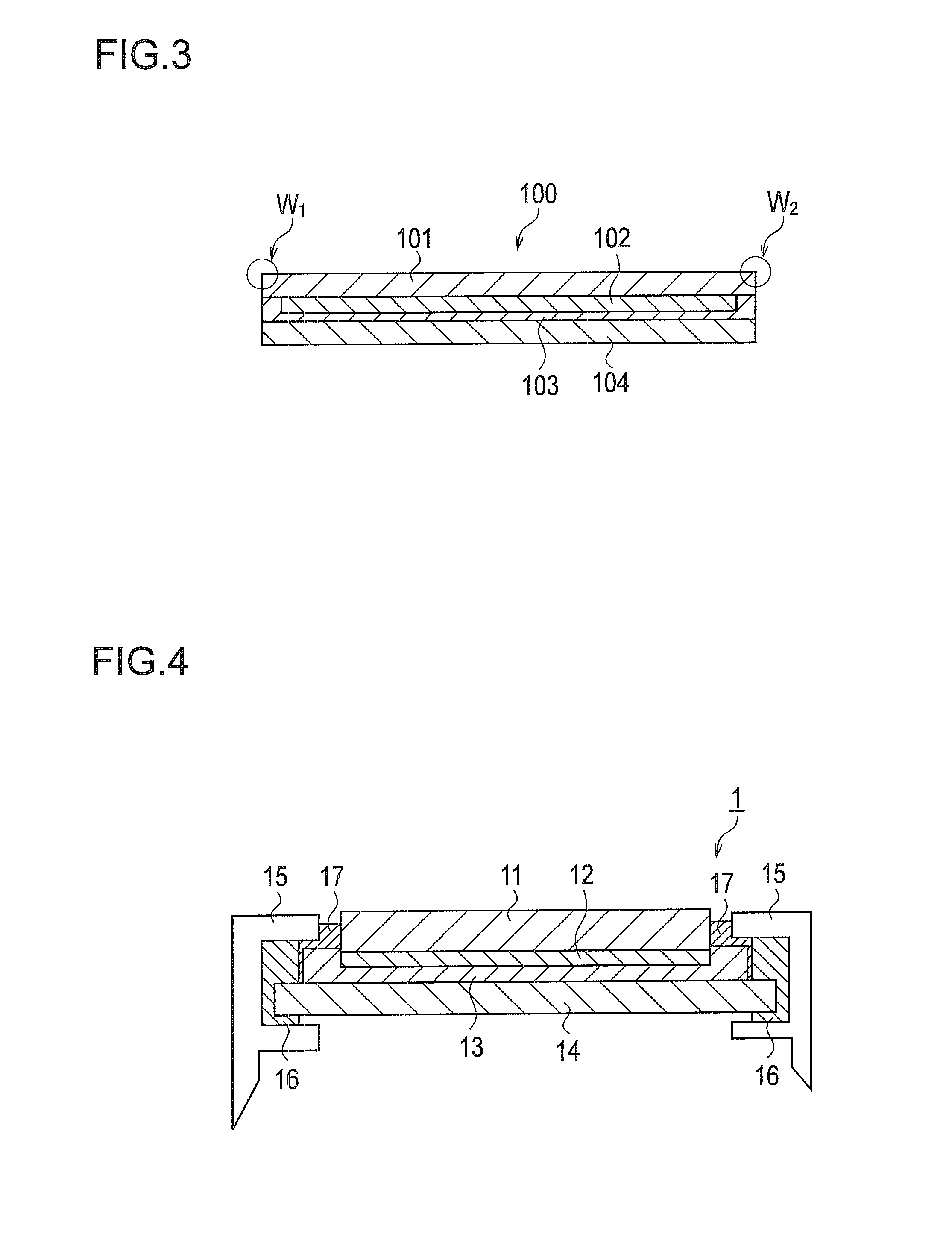Solar cell module
a solar cell module and solar cell technology, applied in the field of solar cell modules, can solve the problems of high possibility of damage to the frameless module, achieve the effects of preventing the damage of the solar cell module, enhancing the strength of the frame 105 holding, and reducing the displacement of the light-receiving surface protection member 101
- Summary
- Abstract
- Description
- Claims
- Application Information
AI Technical Summary
Benefits of technology
Problems solved by technology
Method used
Image
Examples
first embodiment
[0028]By using FIG. 4 to FIG. 7, a description will be given of a solar cell module shown as an embodiment of the present invention.
[0029]As shown in FIG. 4, in a solar cell module 1, a solar cell layer 12 is formed on a light-receiving-surface protection member 11. The light-receiving-surface protection member 11 includes a light-receiving surface and a rear surface provided on a side opposite to the light-receiving surface.
[0030]The light-receiving surface of the light-receiving-surface protection member 11 is made of a glass plate (blue plate glass, for example). The rear surface of the light-receiving-surface protection member 11 is composed of a SnO2 (tin oxide) layer formed on the glass plate by a thermal CVD method. The SnO2 layer serves as a transparent electrode.
[0031]The solar cell layer 12 is formed on the rear surface (SnO2 layer) of the light-receiving-surface protection member 11. The solar cell layer 12 is composed of a semiconductor layer formed on the SnO2 layer, an...
second embodiment
(Modification of Second Embodiment)
[0059]Next, a modification of the second embodiment will be described with reference to the drawing.
[0060]In a solar cell module 3 shown in FIG. 9, the end surfaces 11b of the light-receiving-surface protection member 11 and end surfaces 13b of the filling member 13 are protected by the covering member 17. Moreover, the bonding member 16 used for bonding the rear-surface protection member 14 to the frame 15 covers the cover portions 11c of the light-receiving-surface protection member 11. In other words, in the solar cell module 3, the corner portions 11c of the light-receiving-surface protection member 11 are covered with the bonding member 16. As similar to the solar cell module 2 shown in FIG. 7 and FIG. 8, the bonding member 16 which covers the region S (see FIG. 8) preferably does not overlap the solar cell layer 12.
[0061]The resin materials described above can be used as the filling member 13, the bonding member 16 and the covering member 17....
third embodiment
(Modification of Third Embodiment)
[0067]The solar cell module 4 shown in FIG. 10 has been described on the basis of the structure of the solar cell module 2 shown in FIG. 7. Alternatively, the solar cell module 4 may have a structure based on the solar cell module 3 shown in FIG. 9. To be more specific, the end surfaces 11b of the light-receiving-surface protection member 11 and the end surfaces 13b of the filling member 13 may be protected by the covering member 17. Moreover, the bonding member 16 which is used for fixing the frame 15 holding the rear-surface protection member 14 may be filled between the protection portion 15a of the frame 15 and the outer edge portion of the light-receiving-surface protection member 11.
Other Embodiments
[0068]In the embodiments described thus far, blue plate glass is used as the light-receiving-surface protection member 11, whereas blue plate tempered glass is used as the rear-surface protection member 14. However, the present invention is not lim...
PUM
 Login to View More
Login to View More Abstract
Description
Claims
Application Information
 Login to View More
Login to View More - R&D
- Intellectual Property
- Life Sciences
- Materials
- Tech Scout
- Unparalleled Data Quality
- Higher Quality Content
- 60% Fewer Hallucinations
Browse by: Latest US Patents, China's latest patents, Technical Efficacy Thesaurus, Application Domain, Technology Topic, Popular Technical Reports.
© 2025 PatSnap. All rights reserved.Legal|Privacy policy|Modern Slavery Act Transparency Statement|Sitemap|About US| Contact US: help@patsnap.com



